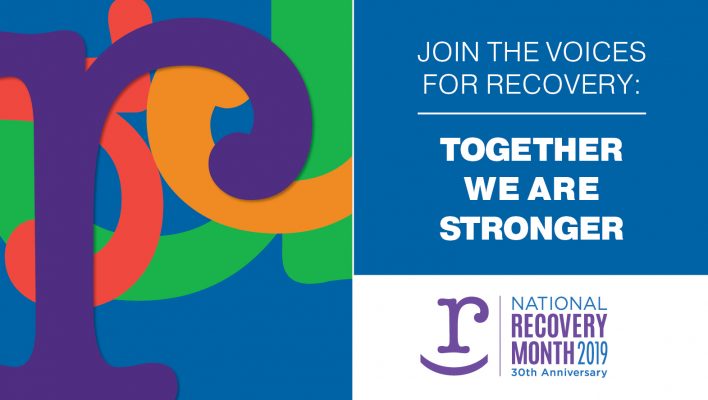September is Recovery Month and this year the Substance Abuse and Mental Health Services Administration (SAMHSA) celebrates the 30th anniversary of this addiction awareness campaign. The 2019 theme, “Join the Voices for Recovery: Together We Are Stronger,” emphasizes the need to share resources and build networks to support the many paths to recovery. It reminds us that mental health and substance use disorders affect all of us and that we can all be part of the solution. Recovery Month highlights inspiring stories to help many people from all walks of life find the path to hope, health, and overall well-being.
One of those inspiring stories is Michael Arnold’s recovery from alcohol addiction. Michael’s alcohol use disorder almost killed her but she turned her life around and now works as an alumni relations manager at the Harmony Foundation. “Every day is a day of recovery, of course, but Recovery Month is that much more focused and there is more intention behind the message of hope that we are all trying to put forward, emphasizing that you can recover,” says Arnold.
Recovery Month began in 1989 as “Treatment Works! Month,” which honored the work of substance use treatment professionals in the field. A lot has changed in 30 years of fighting the stigma of addiction. “Every single year it’s getting better—especially now that alcohol and drug addiction is recognized as a disease of the brain,” says Arnold. “More and more people are starting to show more compassion and desire to understand instead of judging.”
Harmony is celebrating Recovery Month with a 50th-anniversary alumni reunion and a special workshop. “It will look at vulnerability, communication, and owning your sobriety,” explains Arnold. “Behind the ‘stronger together’ motto there is a lot of vulnerability for people in recovery and the workshop will discuss that.” Michael’s own motto is “recover out loud!” Her way of dealing with the disease is to help others, sharing the story of her addiction and recovery instead of hiding her past.
“Our addiction wants us in isolation—completely alone,” she says. “Our addiction wants us in the dark. How do we combat this? Together. Together, we can recover. In order to live a healthy life in sobriety, it is imperative to have a community. When we recover together, we become part of each other’s solutions.”
To spread the message that the door to recovery is always open, she has co-authored a book about recovery. “Our book is all about the fact that addiction doesn’t discriminate, and so recovery doesn’t, either. We work together, no matter what your pathway to recovery may be.”
You can be part of Recovery Month, too
One way to help your community rally around treatment and recovery is to encourage
social media user-generated content. Urge participants to use hashtags like #RecoveryMonth, #RisforRecovery, or #Recovery. Encourage them to share their personal stories about recovery and to tag their friends, family, and other members of their community. A local social media campaign is something easy for people to participate in and can foster a positive, collaborative spirit among community members.
SAMHSA’s Recovery Month toolkit provides a lot more information, resources, and ideas on how to get involved. With your help, the millions of Americans affected by mental and substance use disorders, including co-occurring disorders, will be lifted up into a life in recovery, filled with hope, health, and personal growth.


